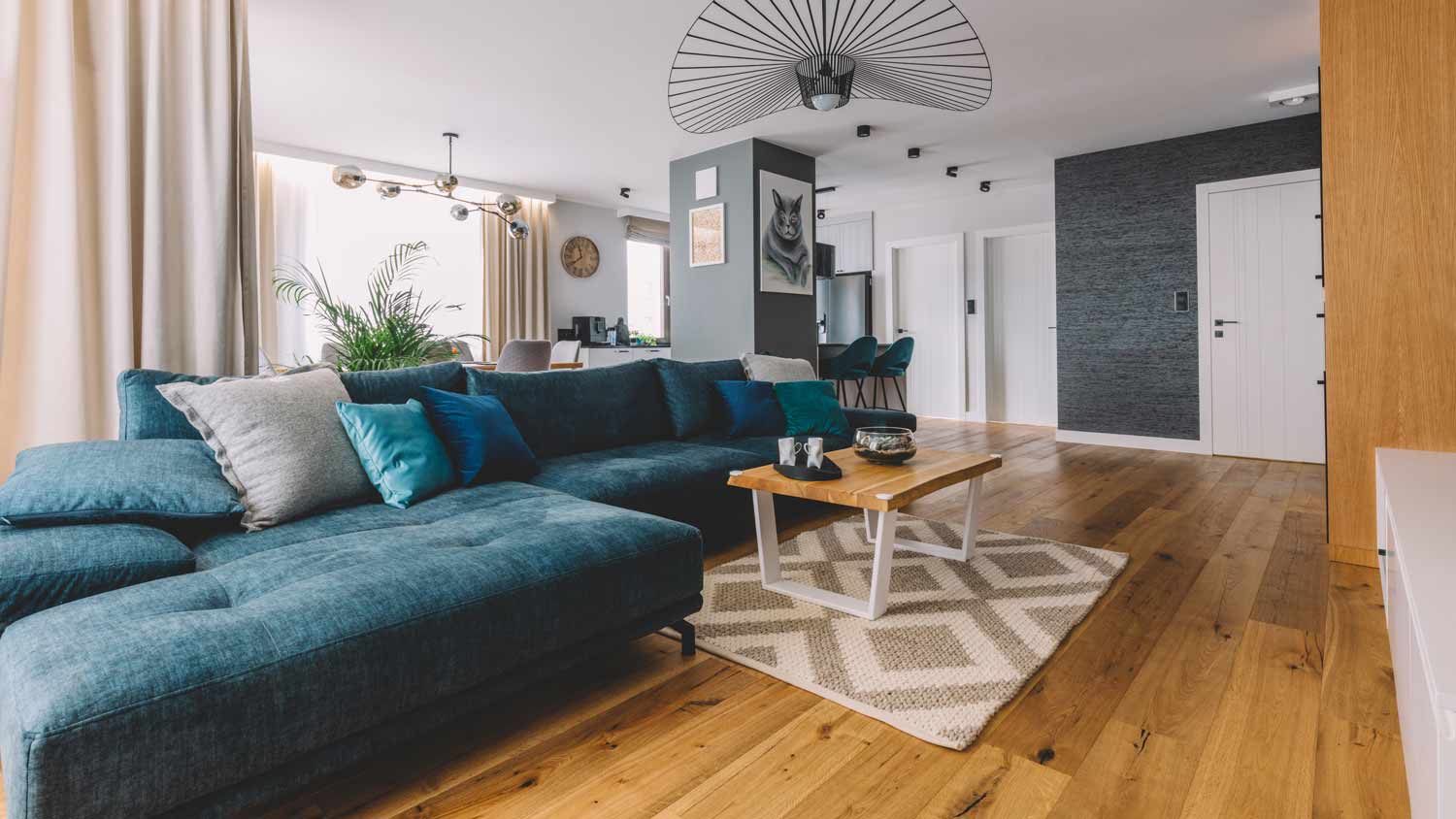9 Types of Concrete Floor Finishes to Suit Any Home
Get to know the softer side of concrete


A concrete floor can elevate your space and give it a modern or industrial look, whether in your kitchen, bathroom, or basement. From stained to polished concrete, there are many concrete floor finishes to achieve the exact look and feel you want. Learn about the best concrete floor finishes, their pros and cons, and when to use each.
1. Troweled Concrete Floor Finish
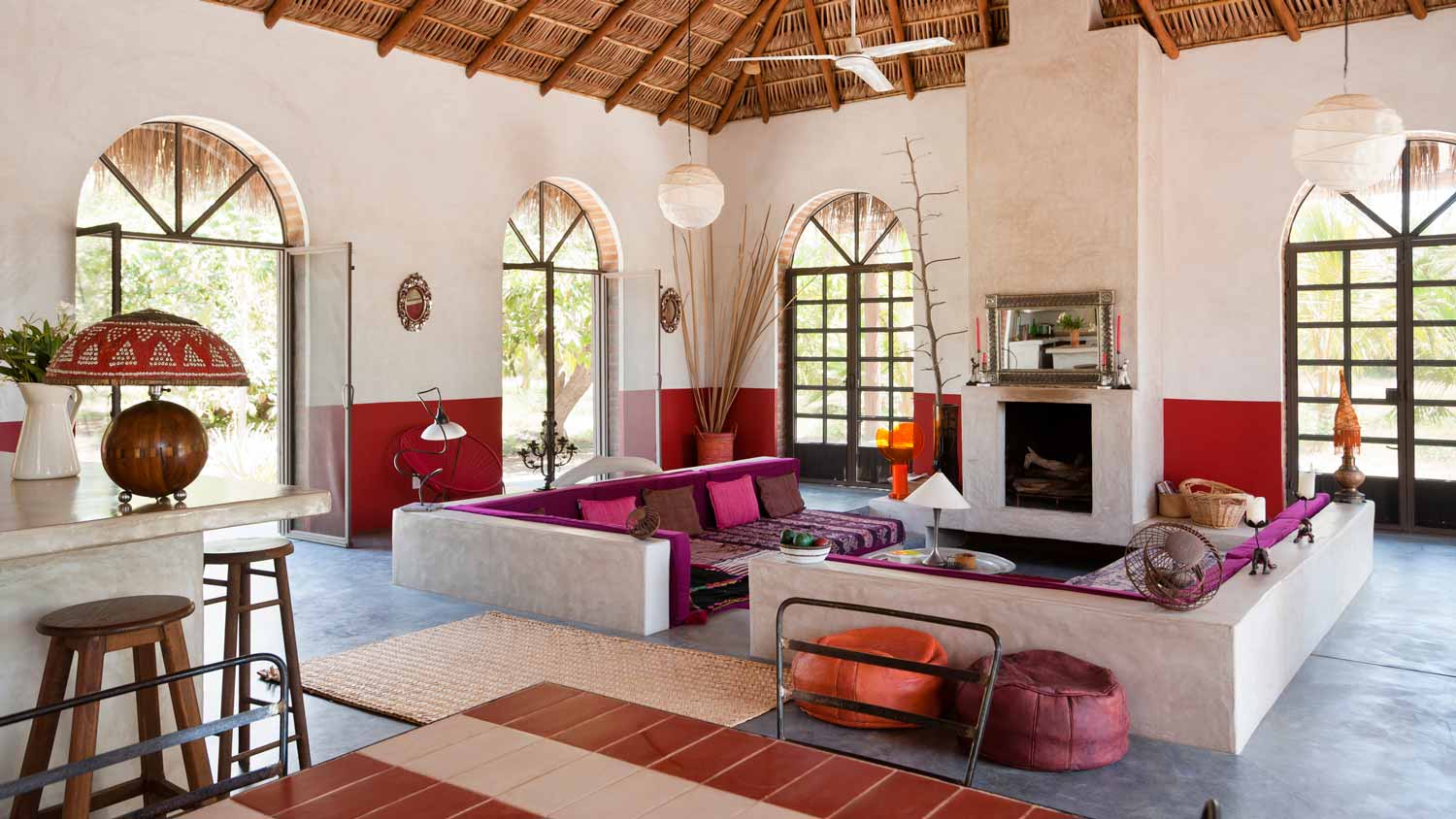
A troweled finish is the most basic way to finish concrete. Once you or a contractor lays the concrete, you smooth and level the surface with a trowel. The result is an even floor that’s rough to the touch and dull gray in color. You can also drag a broom across the surface while the floor is still wet to add texture and slip resistance.
With its utilitarian look, you’ll likely only see this type of concrete flooring finish in an outdoor living space and for driveways and walkways. That said, a troweled floor also serves as the base where you can apply more attractive floor finishes that are better suited for indoor use. The price tag for this default method of finishing concrete is part of the cost of installing a new concrete slab, which ranges between $4 and $8 per square foot.
| Pros | Cons |
|---|---|
| Durable and long-lasting | Can resemble a driveway or outdoor look |
| Allows you to apply more attractive finishes to the base | Often gray in color |
| Easy to maintain and clean | Not as beautiful as other finishes |
| Slip-resistant |
Best for: Outdoor spaces, driveways, and walkways, or the base finish for kitchens, bathrooms, basements, and other indoor flooring
2. Sealed Concrete Floor Finish
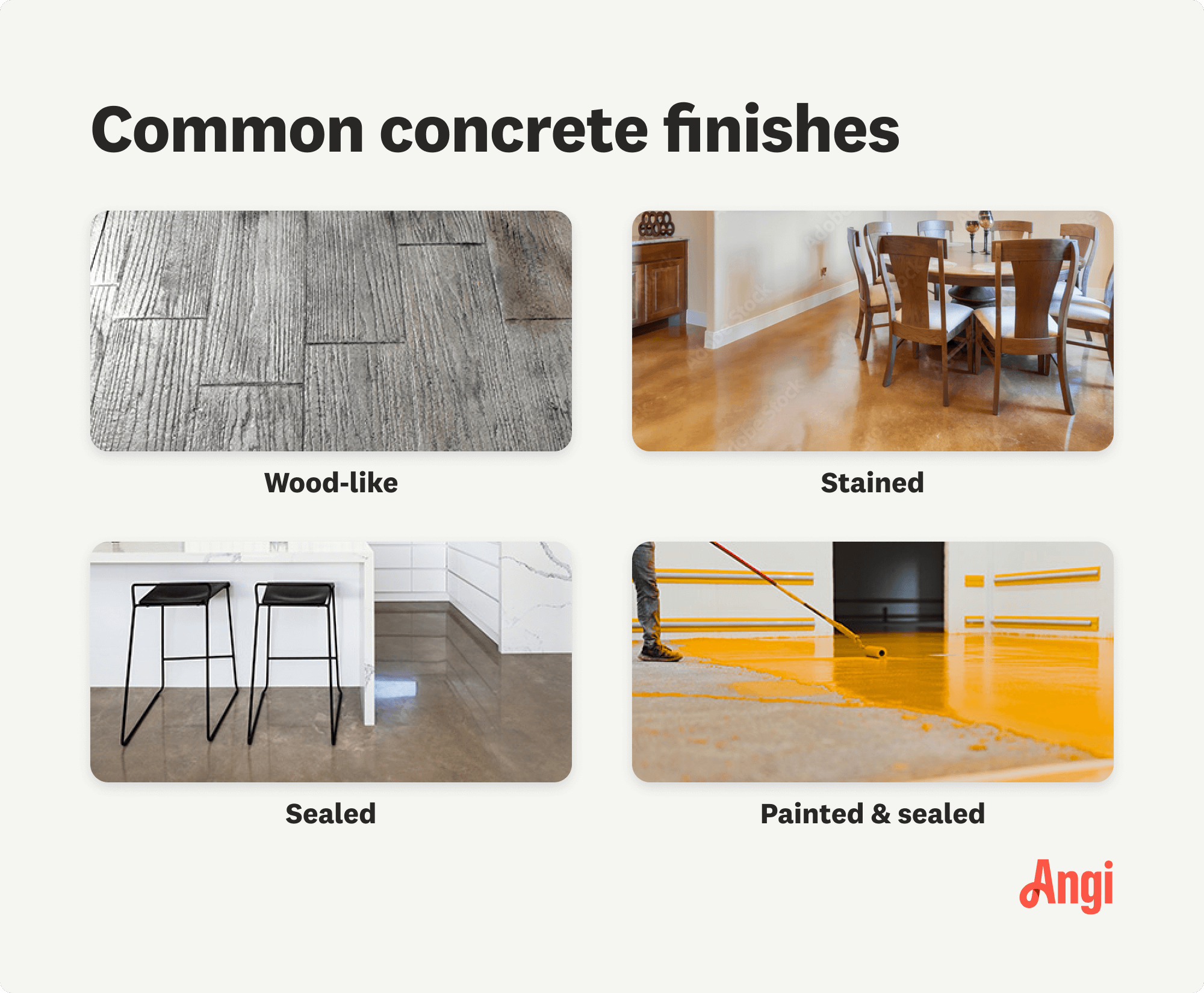
One of the easiest and most cost-effective ways to change the look of troweled concrete is to seal it with a concrete sealer.
Not only does concrete sealer protect the concrete from corrosion, staining, and damage, but it also gives it a shiny appearance, depending on the type of concrete sealer you choose. Learning how to seal concrete isn’t difficult.
While the sealing process is far more affordable than polishing and gives concrete a more attractive appearance than no finish at all, it doesn’t have the same mirror-like results as polishing. Sealer also doesn’t last nearly as long as other floor finishes. It requires resealing about once every two to five years. Expect to pay around $1.50 per square foot for this floor finish.
| Pros | Cons |
|---|---|
| Resistant to stains and chemical damage | Susceptible to wear in high-traffic areas |
| Glossy, shiny appearance | Not as attractive as a polished concrete finish |
| Quick installation | Doesn’t last as long as other concrete floor finishes |
| More visually appealing than standard troweled concrete | Requires more maintenance than polished concrete |
Best for: Driveways, garage floors, storage rooms, and some kitchens and bathrooms
3. Polished Concrete Floor Finish
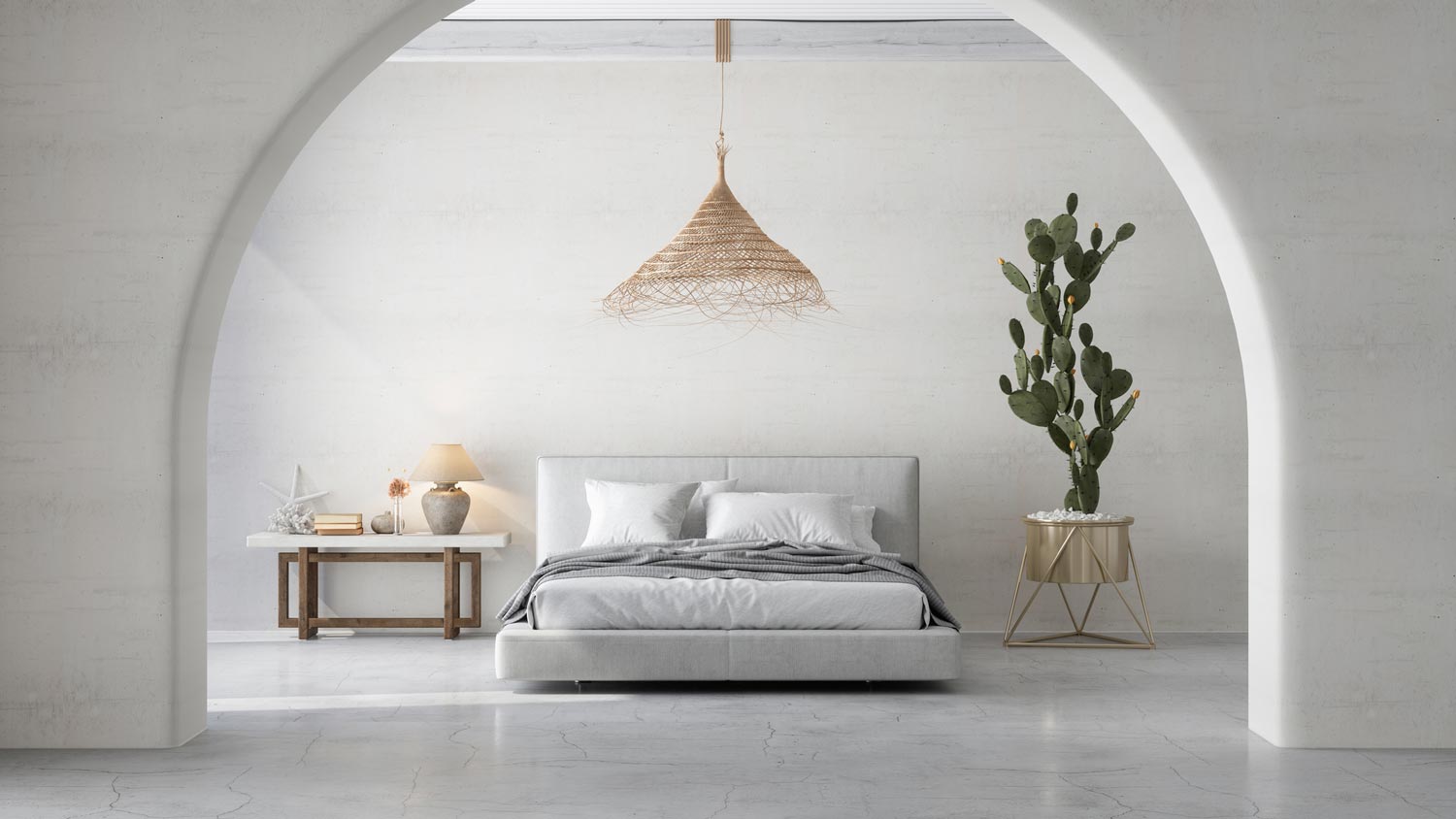
Polishing takes the natural look of troweled concrete and classes it up by polishing it to a high gloss. The concrete polishing process involves using a machine and a series of abrasive pads with increasingly finer grits to grind down the concrete to achieve a smooth, shiny surface.
While this type of finished concrete flooring is common in warehouses and trendy retail clothing stores, it’s becoming increasingly popular in homes with contemporary interior designs.
Polished concrete floors also have the advantage of requiring little to no maintenance since you won’t need to wax a polished concrete floor. The polishing process can be challenging, so you should hire a local concrete flooring company for the job. The cost of polished concrete floors ranges from $3 to $8 per square foot.
| Pros | Cons |
|---|---|
| Durable and long-lasting | Difficult to DIY |
| Versatile, high-gloss design | Can be slippery |
| Easy to maintain and clean | Can be loud, like other hard flooring options |
| Moisture-resistant |
Best for: High-traffic areas such as garages, basements, kitchens, bathrooms, entryways, and mudrooms
Consider your existing concrete floor before choosing a finish. For example, polishing smooth concrete will result in a beautiful high gloss, but you won’t know what an exposed finish will look like until you grind the floor.
4. Stained Concrete Floor Finish
Staining allows you to create striking designs or subtle accents of color in the concrete, giving it a much richer look than the typical gray we associate with this material. Stains come in acid-based and water-based varieties:
Acid-based stains cause a chemical reaction when mixed with concrete, creating interesting color variations that mimic the look of marble or granite.
Water-based stains add color but in a much more uniform way than acid-based stains.
The staining process involves stripping and etching the concrete surface before adding the stain. Once the staining process is complete, the floor is typically polished to a high gloss.
Stained concrete resists fading and won’t chip or peel like paint, making it an excellent option for high-traffic areas. And since the color possibilities for stained concrete are nearly endless, it’s an option for a variety of decor and styles. Stained concrete floors cost between $2 and $6 per square foot for a basic design or as much as $12 to $25 per square foot for more intricate patterns and colors. Because of the trickiness of applying the stain evenly, hire a pro to handle the project for you.
| Pros | Cons |
|---|---|
| Beautiful finish available in many colors | Can highlight flooring imperfections |
| Versatile design options, including marbling, swirls, and stencils | Limited repair or redesign options |
| Can be used in combination with polishing or sealing | Staining may not look even |
| Durable and long-lasting | Installation is best left to a pro |
Best for: High-traffic areas, including kitchens, bathrooms, garages, basements, outdoor patios, entryways, and mudrooms
5. Dyed Concrete Floor Finish
If you want to add color to your concrete but want a more uniform look, consider dyeing it.
Dyeing does not react with the concrete like acid stains do but rather soaks into it to create a uniform color. Since dyes create consistent color, they’re more predictable and easier to work with than stains. And since dyes have more saturation than stains, they offer more vibrant colors, such as red, bright blue, yellow, and orange. Dyes also dry much faster than other concrete finishes, allowing you to get the job done faster.
Keep in mind that dyes will show wear more quickly than stains. While you can get color variation with dyes (water-based dyes create more marbling while solvent-based ones produce solid colors), the coloring is more consistent. For larger rooms, you may need an area rug to break up the solid color. You’ll pay between $3 and $15 per square foot to dye a concrete floor.
| Pros | Cons |
|---|---|
| Expansive color selection | Fades with sunlight exposure |
| Easy to apply and can be a DIY project | Not ideal for designs like marbling or waves |
| Less expensive than concrete stain | Shows wear more quickly than stain |
| Can be added to new or existing concrete floor |
Best for: Kitchens, bathrooms, basements, entryways, and mudrooms
6. Epoxy Concrete Floor Finish
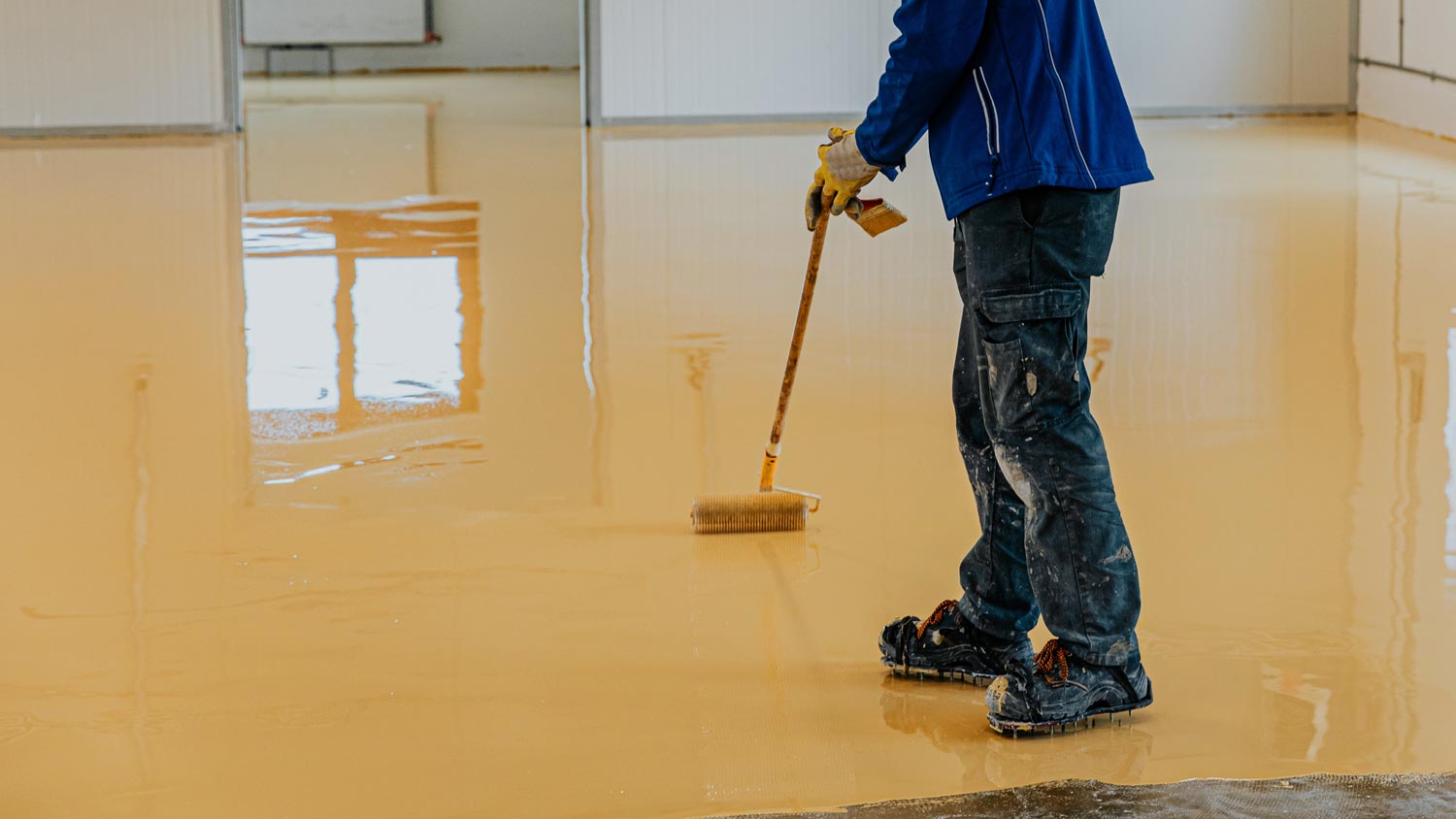
One of the most durable concrete finishes, epoxy is a popular option for garage floors. Unlike dyeing and staining, which penetrate the concrete to add color, epoxy is a coating that goes over the top of the surface.
Epoxy consists of two parts: a catalyst and a hardener. You mix these two parts together just before applying the coating. When the two ingredients interact, they create a chemical reaction that causes the paint to harden into a glossy surface.
Epoxy is affordable and comes in kits, making it one of the easiest finish options for DIYers. Since the finish is so tough, epoxy helps protect the floor from oil, tire marks, and grease stains, which is why they’re such a popular option for garage floors. Though common for garages, epoxy finishes can also add color to concrete throughout the home. Epoxy kits range in price and start at $0.50 per square foot.
| Pros | Cons |
|---|---|
| Extremely durable | Can crack or peel if not installed properly |
| Easy to clean and maintain | Can be slippery |
| Expansive color and design options | Longer curing time than other concrete floor finishes |
| Can be used on an existing concrete floor |
Best for: Garage floors
7. Faux Grout Line Overlay Concrete Floor Finish
There’s no need to tile over your concrete floor to get the look of tile. You can get the same effect by etching the concrete to create faux grout lines. Plus, all it takes to etch concrete is a circular saw with a diamond-tipped cutting blade. After polishing the concrete, mark out lines and use the circular saw to make cuts.
With etching, you can go with a simple square pattern or a more complex design. Pair faux grout lines with the marbled look of acid staining to closely mimic the look of tile. Expect to pay between $3 and $7 per square foot for this treatment.
| Pros | Cons |
|---|---|
| Mimics the look of tile | Difficult to correct installation mistakes |
| Less expensive than tile | Requires fixing floor issues and unevenness before application |
| Available in many colors and designs | |
| Can be used on top of existing concrete floor |
Best for: Kitchens, bathrooms, basements, entryways, and mudrooms
8. Stenciled Concrete Floor Finish
Stenciling allows you to create intricate patterns and colors on your concrete floor, taking the finish far beyond the drab gray of a standard concrete slab. You can either have a custom-designed stencil or choose from hundreds of stock stencils. The possibilities are endless.
There are several techniques you can use to stencil. You can use stencils with dyes to add color to the concrete, create an embossed raised pattern by skim coating over the stencil, or even etch a pattern into concrete by sandblasting over the stencil. Stenciling is a time-consuming and costly process. Expect to pay between $9 and $20 per square foot, depending on how intricate the design is.
| Pros | Cons |
|---|---|
| Great for creating intricate patterns and colors | Can be expensive |
| Many design options available | Time-consuming installation process |
| Durable finish | Can crack over time |
| Easy to maintain |
Best for: Patios, kitchens, bathrooms, entryways, and mudrooms
9. Exposed Concrete Floor Finish
This type of polished concrete floor is ground down significantly to expose the larger chunks of rock and gravel (aka aggregate) that form the core of concrete. Depending on the type of aggregate in the concrete, this process can transform a drab concrete floor into Italian terrazzo and is commonly found in luxury residences.
While this may be an attractive finish, be aware that the aggregate inside concrete varies. While an exposed finish may give some concrete a terrazzo look, others may simply end up looking more industrial. If you want this type of finish, grind down just a small part of the flooring first to ensure you like it before committing to it. The price of creating an exposed finish ranges from $12 to $15 per square foot.
| Pros | Cons |
|---|---|
| Unique, textured appearance | Can end up looking industrial if not installed properly |
| Can resemble Italian terrazzo, stone, brick, or tile | Cracking can occur |
| Available in many colors and designs | |
| Durable and easy to maintain |
Best for: Patios, kitchens, bathrooms, entryways, and mudrooms
Benefits of Finished Concrete Floors
You may think concrete floors sound industrial and commercial. However, concrete may be the perfect flooring solution for your home. Here are some benefits of finished concrete flooring in residential settings to keep in mind:
Durability: Finished concrete floors are very durable and long-lasting.
Less maintenance: These floors need very little maintenance, and in some cases, they’re resistant to mold and water damage. Polished concrete floors make refinishing, buffing, repairs, and upkeep things of the past.
Many design choices: When it comes to concrete floor finishes, there are multiple styles, designs, and colors to suit your space and preferences.
Cost savings: Finishing an existing concrete floor may be more cost-effective than installing a new floor, like tile or wood.
How Much Does Concrete Flooring Cost?
Hiring a contractor to install concrete flooring typically costs $2 to $8 per square foot, but specialized designs like multicolor patterns could increase the price to between $8 and $15 per square foot. A highly polished surface can also raise the price, as it takes several passes to grind concrete to a high gloss. If you need to remove an existing concrete floor to replace it due to damage, this step can cost an additional $2 to $6 per square foot.
DIY vs. Hiring a Pro
It’s better to hire a local concrete flooring expert because this process is labor intensive, and you’ll need specialized tools to level and finish the concrete surface. While you can save $1.50 to $5.50 per square foot in labor costs, we don’t recommend trying to pour or finish your own concrete floors without extensive experience.
Frequently Asked Questions
Epoxy tends to be the most durable concrete finish, holding up on garage and shop floors for years. Epoxy seals the slab's surface, will run into any cracks and crevices, and can help to level the surface, so it tends to be a durable finish for most applications. The downside to epoxy is that it can be difficult to remove once applied.
You can seal old concrete as long as no leftover old sealant is present and your slab is clean and dry. To test for the presence of old sealer, drip a few drops of water onto the surface. If they absorb into the concrete in less than five minutes, it’s time to reseal.
Because concrete is porous, installing flooring directly onto the surface is not a good idea. Any moisture within the concrete due to atmospheric conditions or seasonal humidity can seep into your flooring, causing warping or damage. In most cases, you’ll need to install at least a moisture barrier between the concrete and the flooring you choose.

.jpg?impolicy=leadImage)

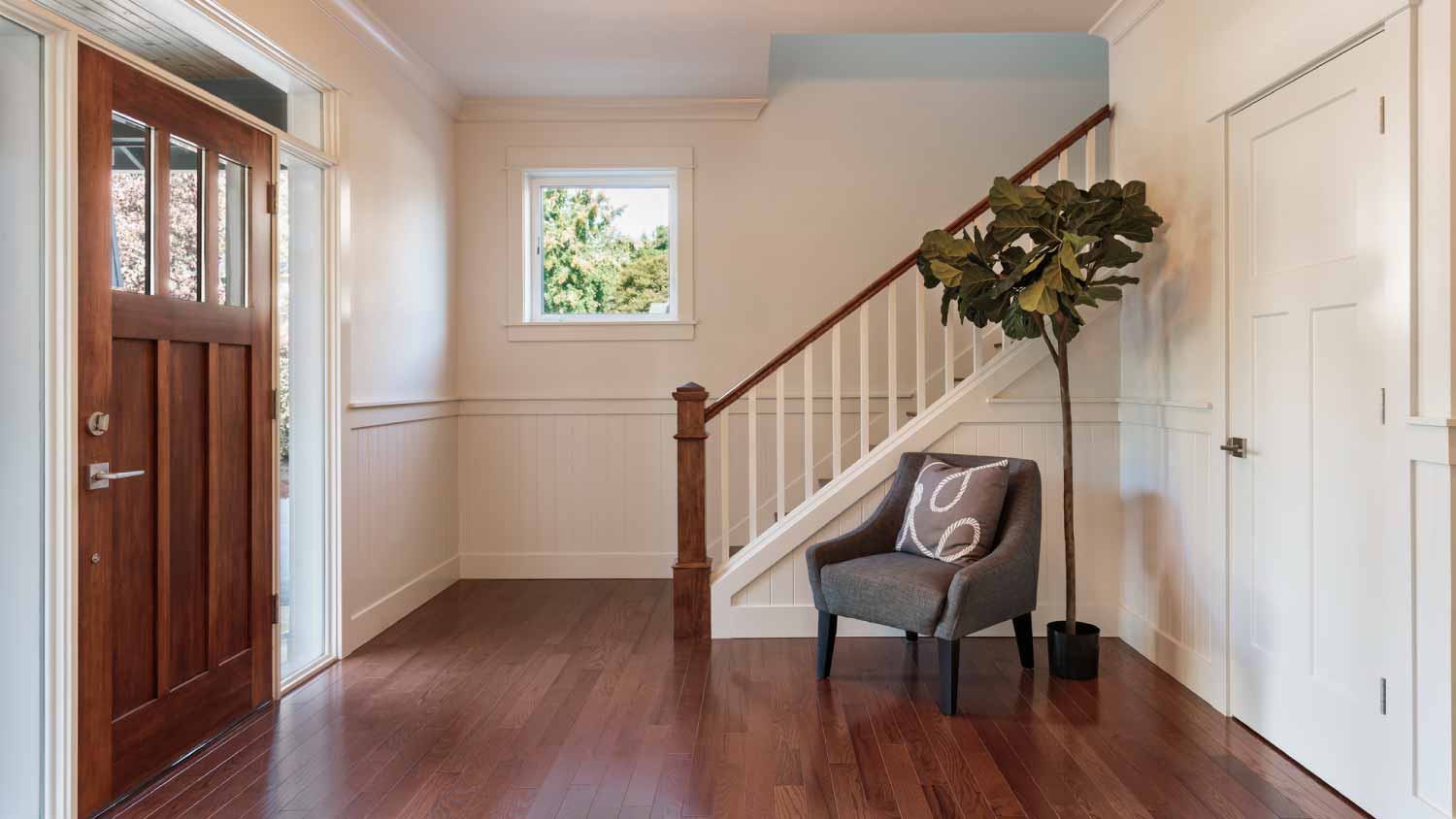

- 9 Types of Concrete Finish for Driveways, Patios, and Walkways
- How to Clean Concrete Indoors and Outdoors
- 17 Types of Concrete and How They’re Used
- Can You Pour New Concrete Over Existing Concrete?
- Concrete Stain vs. Paint: Which Is Best for This Porous Surface?
- 9 Tips and Tricks for Beginners Working With Concrete
- How to Dispose of Concrete 5 Ways
- 6 Concrete Maintenance Tips to Extend Its Longevity
- Unlocking the Advantages of Concrete: Why It’s the Ultimate Building Material
- How to Seal Concrete Yourself to Help It Last Longer




